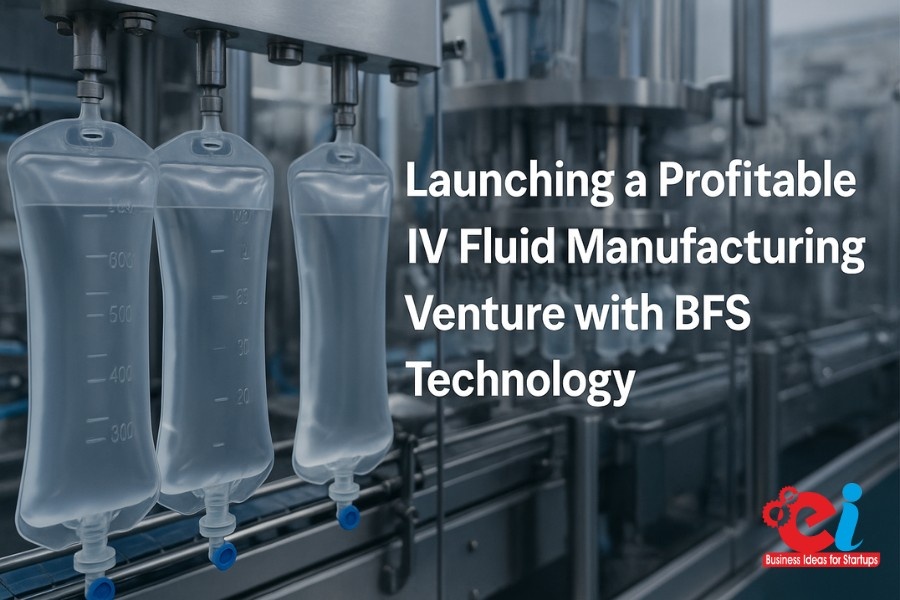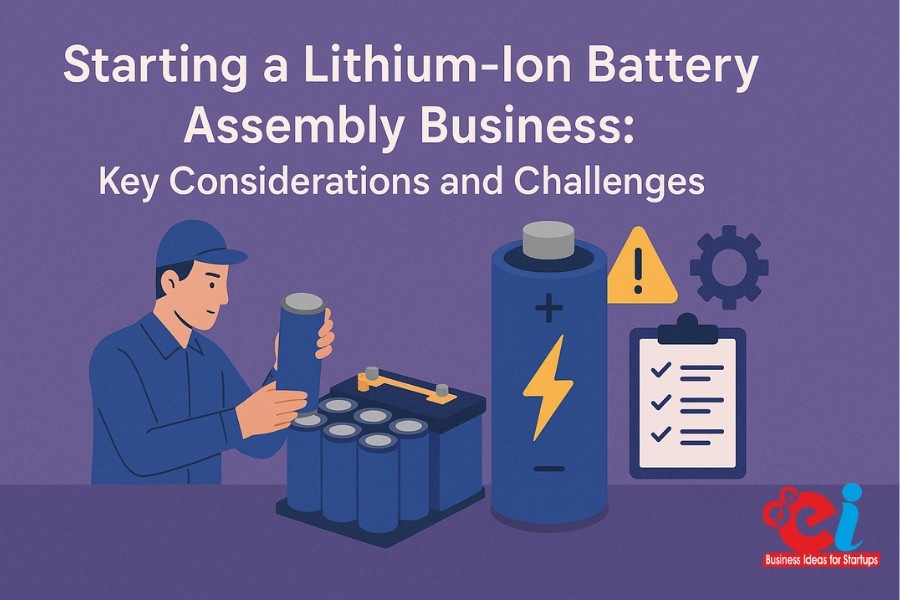Intravenous (IV) fluids are essential for hydration, medicine, and electrolyte balance in health care. There is a high and growing global demand from clinics, hospitals, and even from disaster relief and pharma agencies. This presents a highly lucrative market opportunity for investors that want to set up IV fluid manufacturing plants using Blow-Fill-Seal (BFS) Technology.
With BFS technology, filling and packaging of IV fluids is done at high speeds and without contamination; manual closing and micromanagement of ampoules is no longer necessary. This guide will serve as a roadmap for pharmaceutical businessmen, medical investors, and MSMEs interested in the healthcare sector that wish to set up a BFS-based IV fluid production unit.
1. Grasp the IV Fluid Manufacturing Market Demand
Market Insights
- The IV Fluid Manufacturing is forecasted to exceed 17.8 billion 미국달러 by 2030.
- India’s internal demand is high and rapidly increasing due to hospitalization, trauma care, critical care units, and dialysis.
- IV fluids such as Dextrose, Normal Saline, Ringer’s Lactate, and DNS (Dextrose + Saline) have high and consistent demand.
Target Customers:
- Private and government hospitals and nursing homes
- Tender contracts and pharmaceutical distributors
- NGOs and disaster relief agencies
- Export to African and South Asian countries along with Latin American countries
📌 NPCS offers comprehensive feasibility studies and market-research reports on the export potential for IV fluids.
2. Reasons for Selecting Blow-Fill-Seal (BFS) Technology
Important Benefits:
- Integrated sterile process: The container is formed, filled, and sealed in one continuous cycle.
- Minimal contact by operators: Removes risk of contamination.
- High speed and automation: Produces 10,000–30,000 bottles per machine per day.
- Cost effective: Vials, ampoules, and rubber stoppers are no longer required.
- Regulatory acceptance: USFDA, WHO-GMP, and EU regulations all recognize its use.
Note: BFS is the gold standard for intravenous (IV) fluids, respiratory pharmaceuticals, ophthalmic preparations, and unit-dose systems.
Related: Profitable IV Fluid Manufacturing with BFS Technology: A Startup Guide
3. Choose the Product Line and Packaging Quantities
Common IV Fluids Suitable for BFS Filling
| Product Name | Indication |
| 0.9% Normal Saline | Hydration and wound irrigation |
| 5% Dextrose (D5W) | Source of energy and fluids |
| Ringer’s Lactate | Electrolyte solution |
| Dextrose + Saline (DNS) | Dual action therapy |
| Sterile Water | For injection or dilution |
Packaging Options
- 100 ml
- 250 ml
- 500 ml
- 1000 ml (1L)
In order to reach both the hospital and emergency supply markets, provide with multiple SKU’s. Aim for higher volume sales.
4. Choose the Site and Facilities Needed for the Plant
Site Requirements
- Within an approved industrial zone for pharmaceuticals
- Minimum built up area of 20,000–30,000 sq ft
- WHO and GMP-compliant clean water supply
- 3-phase electricity (250–500 kVA)
Facility Sortation Zones
- Raw Material Storage
- RO + DM Water Plant
- Formulation Preparation Area
- BFS Filling and Seal Zone (Class 100)
- Packaging and Labeling Area
- Microbiology and Quality Control Lab
- Utilities and HVAC System
📌 NPCS designs plant layout blueprints and area zoning plans tailored to WHO and GMP specifications.
5. Understand the BFS Manufacturing Process
BFS Process Flow:
- Polymer Feeding
- LDPE or PP polymer granules are introduced to the extruder.
- LDPE or PP polymer granules are introduced to the extruder.
- Screw Extrusion
- Blow Molding
- Sterilizing the granules and blowing them into a mold to get the sterile bottle.
- Sterilizing the granules and blowing them into a mold to get the sterile bottle.
- Filling
- Aseptic filling of IV fluid formulations into the produced cavities.
- Aseptic filling of IV fluid formulations into the produced cavities.
- Sealing
- The hermetic seal of the bottle in a cap-less and plug-less means for the top region.
- The hermetic seal of the bottle in a cap-less and plug-less means for the top region.
- Trimming and Discharge
- Trimming excess plastic, packing sent bottles.
- Trimming excess plastic, packing sent bottles.
This entire process takes under twenty seconds per bottle.
6. Requirements for Primary Materials
Active Ingredients & Excipients:
- Dextrose Monohydrate
- Sodium Chloride (NaCl)
- Potassium Chloride (KCl)
- Calcium Lactate
- Water for Injection (WFI)
Packaging Materials:
- LDPE or Polypropylene (pharma-grade)
- Labels and cartons
- Sleek tamper-evident caps
Buy from suppliers only who hold a pharmaceutical-grade GMP certification.
7. Licensing and Regulatory Approvals
Approvals Needed:
- Drug Manufacturing License (Form 25/28) from State FDA
- WHO-GMP Certification (or PIC/S if exporting)
- Environmental Clearance (air, water, ETP)
- Factory License and Fire NOC
- CDSCO Site Approval (for BFS plants)
- FSSAI License (if electrolyte drinks are made for retail)
📌 NPCS helps with comprehensive documents, dossier creation and liaising with state FDA and CDSCO.
Related: Starting a Manufacturing Business of IV Fluids
8. Workforce and Staffing Requirements
| Position | Quantity (Initial) |
| Plant Head (Pharma) | 1 |
| Production Managers | 2 |
| Microbiologist & QA Officers | 3 |
| Electrical/Mechanical Engineers | 2 |
| Machine Operator and Technicians | 10–12 |
| Packagers and Helpers | 15–20 |
| Administrative and Logistics Staff | 3 |
Train staff on GMP-compliant SOPs using BFS experience.
9. Marketing Tactics for Your IV Fluid Brand
Use Of Product:
- Providers of medical services through purchasing tenders
- Private Medical Facilities and Hospital Chains
- Pharmaceutical and Medical distributors and dealers
- Export consumers (Africa, Southeast Asia)
Marketing Insights:
- Promote BFS cleansing superiority
- Set pricing according to offer
- Attend pharma exhibitions and medical device exhibitions
- Enroll in listings on PharmaB2B websites and other export websites
10. Market Exporting and Compliance
Established Regions for Exports:
- The Philippines
- Sri Lanka
- Kenya
- Nigeria
- UAE
Documents Required:
- WHO-GMP / PIC/S approvals
- Documentation of the registering country
- COPP
- Labeling and paperwork as per customs regulations
Sign up to Pharmexcil and APEDA for support on exports.
Conclusion
Operating any IV fluid manufacturing in a plant with Blow-Fill-Seal technology is a capital-intensive business with great ROI and further growth and demand potential. Precision is key in every step, from selecting the BFS machinery to licensing and marketing.
Investing in and partnering with an industrial consultant like NIIR Project Consultancy Services (NPCS) makes sure that the project is technically compliant, financially plausible, and expansion-ready for future export opportunities.
Contact NPCS for:
- Turnkey Project Reports (DPR)
- BFS Plant Layout & Machinery List
- Licensing & WHO-GMP assistance
Financial Planning & Feasibility Analysis

























